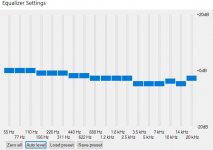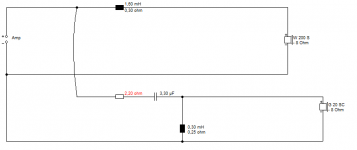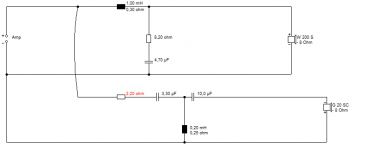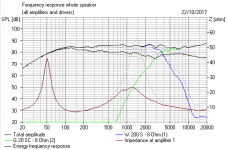There is a rug... it's just not quite centered or wide enough for both sides... I just said this is the 2nd living room they have been in. And I said that they sounded very much the same in an MTM arrangement. More the same than different. And the sound character that bothered me was there back then too (In a different room, with the MTM arrangement). I can move the speakers 2-3 feet in either direction, I have absorbing panels that I can position to block first reflections... that character is still there. I EQ (7 band variable Q parametric) some stuff that made improvements, but it only improves to a certain point.
MTM speakers have a different lobing structure due to the MTM arrangement and the reflections are reduced for the same reason. Have you tried laying a rug on the floor, or moving the end table to next room? I know mine get harsh when the coffee table is empty and in between me and the speakers.
Wolf
A good design speakers should not need a rug or getting rid of a table, or anything to make them sound good. If you need to change your wooden floor to make the speakers sound good, then there is something wrong with the logic. You just have to face the truth that the xover design is the problem.
Hi 5th
I did not see your post because as I was writing, it wasn't there. Only after I reviewed the post later, did I realized that it may appear I was referring to your statement. I hope it did not cause any misunderstanding.
Some of the diagnose seems a bit of a contradiction. First of all, an xover shouldn't introduce distortion unless there is something wrong or there are defects in the components. The xover may allow the drivers to operate beyond its range therefore let through more distortion. But the vibes I got from some of the veterans here is that there is nothing wrong with the design and low xover of the tweeter is perfectly fine so I don't see how you can say the problem is distortion at the same time saying the design itself is fundamentally sound.
If you still insist that distortion is the problem then the only source of distortion can only come from the drivers, but these are Scan Speak top of the line so it's unlikely that the drivers themselves are the problem (although personally I never worked with these drivers).
It is a contradiction.
You're only going to get excess distortion with this design if the drivers are faulty. The chance of this is extremely low with scanspeaks quality control, but merlin doesn't like how they sound and nothing about this design really indicates why he'd get excessive listening fatigue.
The other criticism is somehow a 6.5 + 1 is a compromise design, but there are a lot of very good 6.5+1 out there so everything just points to the xover design that is the problem.
Yes I don't see this as a problem either. This Zaph design is a great example of how to do a 6+1 whilst helping to eliminate the problems they normally suffer from.
I just want to put this here as food for thought. Quoted from Troels Gravessen's website regarding a 2-way with the 8531:
"I'm afraid this is where it's going to end for the time being. "Afraid"? Well, I'm not really sure this 8531 driver was meant to perform in a two-way system up to 2.5 kHz.
Technically speaking no 6.5" driver should be used in a classic two way up to 2.5kHz. With a waveguide, sure, but with a standard dome? No thanks. Which is why Zaph crosses it down at 1.7kHz.
but people act like those 2 graph are good so there is no reason for me to not love the speaker.
It is confusing.
A good design speakers should not need a rug or getting rid of a table, or anything to make them sound good. If you need to change your wooden floor to make the speakers sound good, then there is something wrong with the logic. You just have to face the truth that the xover design is the problem.
A good design would be one that doesn't suffer from floor bounce (floor mounted woofers in three ways) and uses wave guides, or similar, to control directivity. Then you'd have a design that's influenced far less by it's surroundings. Otherwise the room can have a significant effect on how the system sounds.
Merlin has used these speakers in two different rooms without much difference in perceived sound though so this does point towards the crossover.
Merlin- just trying to rule out other possibilities as the FR looks just fine to me.
The FR looks fine to me too, as a starting point, but that doesn't mean everything is okay in audio nirvana.
So lets look at this gain...
The FR looks fine, I'm guessing that Zaph's xover is functioning correctly and more than likely the drivers are not defective. Therefore the drivers will be well integrated and distortion will be low.
If driver integration is good and distortion is low then, besides the intrinsic off axis performance of such a design+room, the only thing that's really going to affect the sound is the frequency response. Altering the frequency response with the crossover is entirely possible (ie shaping the tweeters last few octaves) but there is really no difference between this and applying digital EQ.
I know that some EQ attempts have been tried but I'm encouraging you to try again. What you'll need is a music player with a decent equaliser, foobar would do. Try an EQ profile like the one I've attached. Notice that the bars at the lower frequencies are dialed in to 0dB and then the separation between the next bars up in frequency are just one position over.
This should attempt to mellow the tweeter and add in a bit more bafflestep compensation. A 2.5 way design should not need this but I'd be curious to know how this sounds.
My Saton design has a somewhat bumpy frequency response but is a smooth as silk. They are mounted in corners and theoretically shouldn't have needed any bafflestep compensation, but they melted my ears until I added a couple of dBs to them.
Attachments
 Please see steve's post here that was accidentally posted to the wrong thread and has been moved here where it was intended. http://www.diyaudio.com/forums/multi-way/311454-zaph-madisound-zrt-2-5-a-6.html#post5219467
Please see steve's post here that was accidentally posted to the wrong thread and has been moved here where it was intended. http://www.diyaudio.com/forums/multi-way/311454-zaph-madisound-zrt-2-5-a-6.html#post5219467Tony, I used to be a moderator on a PC forum. I know the problems of it. 
Perhaps I can just repost my thoughts on this problematic Zaph 2.5 way:
The scanspeak 18W/8531-G00 woofer is extremely difficult.
And the simplistic Zaph 2.5 way is what Lynn calls a LGWAG speaker which distorts complex music. You really must read Lynn's thoughts on this. I've certainly found it to be true when using simple filters at lower crossover point.
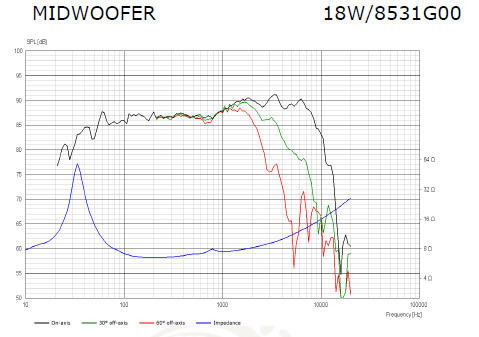
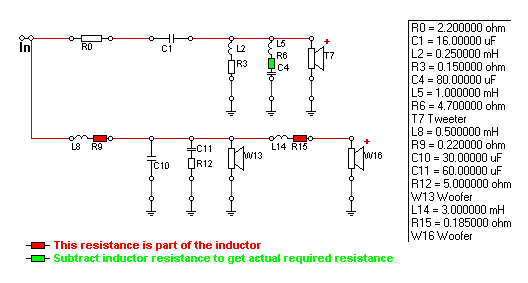
What Lynn is saying is that distortion is the great enemy with low-order filters. TBH, I always hear some good in them. A lively acoustic. But after an hour of listening, my ears pick up distortion.
Just for completeness, let me recommend this Harbeth C7ES-3 design with a complex3rd/4th order filter as being a good way to do things. Metal dome, well-behaved 8 inch polycone bass, damped ply cabinet and doubtless negative polarity employed at around 3kHz. Classic BBC design by Alan Shaw. And for sure, a much easier woofer than the Scan 18W/8531-G00.
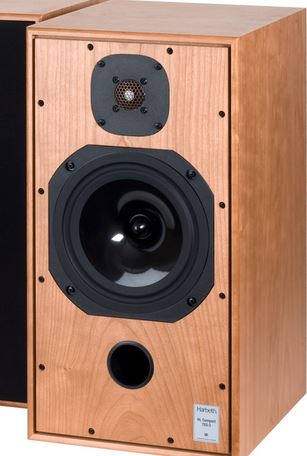
People who've suggested a three way might solve this are dead on the money, IMO.
Perhaps I can just repost my thoughts on this problematic Zaph 2.5 way:
The scanspeak 18W/8531-G00 woofer is extremely difficult.
And the simplistic Zaph 2.5 way is what Lynn calls a LGWAG speaker which distorts complex music. You really must read Lynn's thoughts on this. I've certainly found it to be true when using simple filters at lower crossover point.
A common but unsuspected cause of sibilance is crossing the tweeter too low, or using a shallow-slope crossover. Many designers - unfortunately, a lot of them in the high-end biz - forget that direct-radiator drivers increase excursion at a rate of 12 dB/octave. Thus, it takes a 12 dB/octave highpass filter to merely keep excursion constant in the frequency range between nominal crossover and the Fs of the tweeter.
For example, if the tweeter has a typical Fs of 700 Hz, and the intended crossover is 2.8 kHz (again, typical), it takes a 12 dB/oct electroacoustical filter to merely keep excursion constant in the very critical 700 Hz ~ 2.8 kHz range. Part of the reason that this range is so critical is that audibility of distortion is at a maximum in the 1~5 kHz region. (Perception of distortion similar to, but not quite the same as, the Fletcher-Munson curve.)
Staying with the same example, if the electroacoustical filter is 1st-order (6 dB/octave), then excursion actually increases from 2.8 kHz on down, until 700 Hz is reached. Below 700 Hz, the excursion finally starts to decrease, but not very fast, only 6 dB/octave. This is troublesome because the maximum spectral energy of many recordings is around 300~500 Hz, so energy from this range can crossmodulate with the tweeter output.
This is why auditioning with little-girl-with-a-guitar program material and a full choral piece sound different. The LGWAG is spectrally sparse, and there isn't as much chance the tweeter will be struggling with IM distortion. Throw a dense, high-powered spectrum at the loudspeaker, though, and the tweeter will start to scream - and it is very audible on massed chorus as complete breakup.
At any rate, regardless of distortion of a particular tweeter (none of them are free of IM distortion), crossovers matter. Many designers want to take the tweeter as low as possible because the polar pattern is prettier and certainly measures nicer, but the inevitable price to be paid is more IM distortion resulting from increased excursion (the linear region is most tweeters is less than 1mm). Choosing a crossover is a difficult tradeoff between narrowing of the vertical polar pattern, IM distortion from out-of-band excursion, and how close the designer wants to approach the region of midbass driver breakup. The tradeoff is made more difficult when a rigid-cone (Kevlar, metal, ceramic, etc.) midbass driver is chosen, because the onset of breakup commonly falls in the 3~5 kHz region, right where the ear is most sensitive to distortion.
As you can see, the worst possible solution is a 1st-order crossover combined with a midbass driver that has a severe breakup region (Kevlar drivers, I'm looking at you). The 1st-order crossover fails to control out-of-band excursion, so program material in the 700 Hz-2.8 kHz region results in IM distortion in the tweeter's working range, while plenty of midbass breakup in the 3~5 kHz range gets through as well. And midbass breakup sounds the same as a bad tweeter, since the distortion and resonances fall in the same frequency range.
As a side note, most transistor amplifiers (including very expensive high-end products) go from Class A operation to Class AB around 1 watt. Feedback helps, but cannot fully overcome the two-to-one shift in transconductace as the AB region is traversed. In addition, thermal tracking is typically several seconds to a minute late (depending on the thermal mass of the heatsink and location of bias sensor), so the correct AB bias point is actually several seconds behind the program material. There are various sliding bias-tricks available (which avoid complete turnoff and associated switching transition), but they are all several seconds late. The more output transistors, the more AB transitions there are, since it is impossible to have transistors exactly match the switching transition - in production, they are matched for beta (current gain), but not usually for other parameters. Change the die temperature a bit, and the careful hand-matching goes away.
To recap, if you want lots of sibilance, use a midbass driver with severe breakup in the 3~5 kHz region (this is usually obvious from unsmoothed FR curves), pick a tweeter with limited excursion capability (not always spec'ed), select a 1st-order crossover at a low crossover frequency, and use an amplifier with a very large heatsink, many transistors, and somewhat unstable Class AB biasing (thermal overshoot). That should do the trick. Plenty of distortion from many different sources, even though the overall FR curves may look harmless.
What Lynn is saying is that distortion is the great enemy with low-order filters. TBH, I always hear some good in them. A lively acoustic. But after an hour of listening, my ears pick up distortion.
Just for completeness, let me recommend this Harbeth C7ES-3 design with a complex3rd/4th order filter as being a good way to do things. Metal dome, well-behaved 8 inch polycone bass, damped ply cabinet and doubtless negative polarity employed at around 3kHz. Classic BBC design by Alan Shaw. And for sure, a much easier woofer than the Scan 18W/8531-G00.
People who've suggested a three way might solve this are dead on the money, IMO.
What Lynn is saying is that distortion is the great enemy with low-order filters. TBH, I always hear some good in them. A lively acoustic. But after an hour of listening, my ears pick up distortion.
Just for completeness, let me recommend this Harbeth C7ES-3 design with a complex3rd/4th order filter as being a good way to do things. Metal dome, well-behaved 8 inch polycone bass, damped ply cabinet and doubtless negative polarity employed at around 3kHz. Classic BBC design by Alan Shaw. And for sure, a much easier woofer than the Scan 18W/8531-G00.
I am not sure 3rd/4th order is a solution to everything. Ultimately the ears will be the judge. And different ears will prefer different things. There is no one fit all solution. I understand each xover type will have its plus and minus and every design has its own compromise, and high order xover may have a nice freq. response and probably more even power, but the phase shift of higher order xover does leave a lot to be desire. Low order xover has its disadvantage too, but I much prefer it over higher order. I remember Troels did some experiments in which 1st was preferred if done right. But regardless of which filter to use, personally I don't like the idea of crossing tweeter below 2Khz either. It's funny that I tend to cross over my tweeter as high as I can get away with while some here do the opposite.
Now in the case of the ZRT 2.5 which uses the 6.5 driver, that does narrow your option in term of what type of filter to use. I wouldn't use 1st on it either. But since I don't have any data on it, it's hard for me to say. But at the same time, I don't think the solution is just slapping a 3rd/4th order which is like killing a fly with a shot gun or as they say, using a hammer instead of a scalpel. Maybe some judicious use of equalizer can be employed with lower order.
If I might use car as an analogy. The Japanese sport cars tend to fall into the trap of making their sport cars with overly stiff springs to hide the lack of chassis fine tuning which does improve the handling but they tend to be one dimensional and a bit lifeless. The German sport car most of the time don't have overly stiff springs but the chassis and each components are fine tune to work harmoniously so that the driving experience is more complete. Using 3rd/4th order filters to hide weakness in other components is probably not a good solution either.
Last edited by a moderator:
The moderators here are trying to lead us away from the idea of quoting the previous post, just to avoid clutter. 
I have an old pair of Robin Marshall speakers called the Monitor Audio R300-MD. 8" paper bass plus 3/4" SEAS 19 TAF/G metal tweeter. It's not way different from this classic Harbeth polycone design:

I didn't like them initially. I could hear some distortion. These days, I just love them. I gave them a deeper BBC-style negative polarity BW3 filter, and they work much better, IMO. The changes are small. But it's like trousers that are too tight, or ones that fit right, IMO.
FWIW, if you are interested in this sort of 8" plus 1" tweeter idea, Joachim Gerhard is having a very good time with these two SEAS drivers, even on very simple coil and cap filters.
H1659-08 U22REX/P-SL
H1499-06 27TBCD/GB-DXT
Increasingly, I like well-behaved drivers. Everything else then just falls into place.
I have an old pair of Robin Marshall speakers called the Monitor Audio R300-MD. 8" paper bass plus 3/4" SEAS 19 TAF/G metal tweeter. It's not way different from this classic Harbeth polycone design:
I didn't like them initially. I could hear some distortion. These days, I just love them. I gave them a deeper BBC-style negative polarity BW3 filter, and they work much better, IMO. The changes are small. But it's like trousers that are too tight, or ones that fit right, IMO.
FWIW, if you are interested in this sort of 8" plus 1" tweeter idea, Joachim Gerhard is having a very good time with these two SEAS drivers, even on very simple coil and cap filters.
H1659-08 U22REX/P-SL
H1499-06 27TBCD/GB-DXT
Increasingly, I like well-behaved drivers. Everything else then just falls into place.
Attachments
 that we do Steve, I've edited the quote down to what I think was the relevant potion. Just to be clear, the new rules do allow trimming of quotes (to get to the relevant bit) provided nothing of the original is changed including removal of context.
that we do Steve, I've edited the quote down to what I think was the relevant potion. Just to be clear, the new rules do allow trimming of quotes (to get to the relevant bit) provided nothing of the original is changed including removal of context. We definitely don't like it when the whole post is quoted and is just above.
I don't think tweeter distortion is the problem here. The Scan-Speak 6600 AirCirc is a $200 high end product and is capable to handle a low crossover frequency.
The woofer (Scan-Speak 18W/8531G00) is more problematic IMO. It does indeed have elevated 2nd harmonic distortions in the range from 500 to 1000 Hz. Both German loudspeaker magazines show a distortion level around 1% at 90 dB and Merlin's own measurements also show an increase of 10 dB:


I assume that's the coloration Troels Gravesen describes and that's what bothers the OP. Unfortunately there's no cure for driver inherent distortions (except exchanging the drivers). No crossover modification will really help.
The woofer (Scan-Speak 18W/8531G00) is more problematic IMO. It does indeed have elevated 2nd harmonic distortions in the range from 500 to 1000 Hz. Both German loudspeaker magazines show a distortion level around 1% at 90 dB and Merlin's own measurements also show an increase of 10 dB:
I assume that's the coloration Troels Gravesen describes and that's what bothers the OP. Unfortunately there's no cure for driver inherent distortions (except exchanging the drivers). No crossover modification will really help.
I am dubious whether this whole Zaph Revelator 2.5 way is fixable. 
Zaph|Audio - ZRT - Revelator Tower
This may not be how I would choose to do things, but for sure, the Ekta Grande holds out hope for improvement.
Terrible low impedance, IMO. But we just do our best.
Zaph|Audio - ZRT - Revelator Tower
This may not be how I would choose to do things, but for sure, the Ekta Grande holds out hope for improvement.
Terrible low impedance, IMO. But we just do our best.
^^That range of higher distortion matches with baffle step in many cases. Zaph shows in-box measurements with xo and we see nice slopes of two drivers in .5 config. Thus we can expect problematic distortion only with extreme spl. Same goes for the tweeter.
I have been following this thread for weeks daily and can't see anything solved. My guess is that the tweeter just is a bit too loud. I had Zaph's L18 and they were too bright sounding (not much and I didn't have measuring gear then)
I have been following this thread for weeks daily and can't see anything solved. My guess is that the tweeter just is a bit too loud. I had Zaph's L18 and they were too bright sounding (not much and I didn't have measuring gear then)
IMO, the problem here is frequency response based. It may look good in a scale covering 60-80 dB but it only takes small amounts of emphasis to really ruin the balance. In my experience, I have to get the response within 0.5 dB of "correct" throughout the band to really sound great.
For this reason, I really don't think it's a good idea to buy DIY designs because it's like buying speakers from a company with no quality control. Zaph built his set 10 years ago and has not verified the sound of the design since. If you're able to measure and simulate, DIY can yield fantastic results cheaply, but otherwise it's a crap shoot.
For this reason, I really don't think it's a good idea to buy DIY designs because it's like buying speakers from a company with no quality control. Zaph built his set 10 years ago and has not verified the sound of the design since. If you're able to measure and simulate, DIY can yield fantastic results cheaply, but otherwise it's a crap shoot.
IMO, the problem here is frequency response based. It may look good in a scale covering 60-80 dB but it only takes small amounts of emphasis to really ruin the balance. In my experience, I have to get the response within 0.5 dB of "correct" throughout the band to really sound great.
For this reason, I really don't think it's a good idea to buy DIY designs because it's like buying speakers from a company with no quality control. Zaph built his set 10 years ago and has not verified the sound of the design since. If you're able to measure and simulate, DIY can yield fantastic results cheaply, but otherwise it's a crap shoot.
Which loudspeaker, bought or made without prior listening in my room, is not a crap shoot ? What difference does it make if you are buying it or making it ?
Most of Zaph's designs are better than 95% POS that is offered today and for large amount of money. If this was Sonus Faber, guys would try to tame the high frequency with cables and "darker" amps. If you are able to measure, then you'll see what is being sold for hi-fi these days.
This is DIY with Y for "yourself". If the tweeter is too high in level, put bigger series resistor in Lpad (or lower the shunt) until you get to the level you want.
I don't understand 10dB grid also, or 5dB for that matter. I almost always put 2dB grid in my measurements (rarely 5dB) and i do not squash them to look flat and pretty. I expand them and if they still look pretty, one part of the job is done.
Last edited:
This is DIY with Y for "yourself". If the tweeter is too high in level, put bigger series resistor in Lpad (or lower the shunt) until you get to the level you want.
Unfortunately, I don't think it is as simple as just "put bigger series resistor". If a pair of speakers is inherently bright sounding, changing the series resistor only affect a certain aspect of the sound but the overall brightness would still be there. The only true solution is to rework the entire xover. I don't think the problem is the drivers, I mean I wish I had these in my hands since they are a little too pricey for me.
Last edited:
That was a suggestion. It is easy and cheap to try. If it solves the problem, great. If not, then we move on. Contemplating on what it might be before checking simple things like that leeds nowhere.
I've looked at Zaphs sims and measurements. Lower midwoofer deals with baffle step as it should. It looks quite flat up to cross over point. OP mentioned that things get better when 3.5KHz is down 4dB. That's why i think that he should deal with tweeter.
But, as have been said earlier, individual measurements must be made and if shown with 5dB grid, then expanded so we are able to tell where the problems are in frequency reaponse - if there are any.
I've looked at Zaphs sims and measurements. Lower midwoofer deals with baffle step as it should. It looks quite flat up to cross over point. OP mentioned that things get better when 3.5KHz is down 4dB. That's why i think that he should deal with tweeter.
But, as have been said earlier, individual measurements must be made and if shown with 5dB grid, then expanded so we are able to tell where the problems are in frequency reaponse - if there are any.
Last edited:
What comes to room influence, most living room measurements show high RT values in the range of 1-4kHz (I like to watch REW's decay Graphics.). This is compensated with most 2-way speakers with increased directivity in this range (because of the narrowing directivity of the 6½" woofer and xo above 2kHz)) In this ZRT case xo is lower and therefore it radiates much more energy to the listening window (and total 3D) to 2-3kHz than typical 2-ways.
So it might be that merliX has just got adapted to typical 2-way sound - or perhaps this typical sound is psychoacoustically better in the living room than "ideal" power response?
So it might be that merliX has just got adapted to typical 2-way sound - or perhaps this typical sound is psychoacoustically better in the living room than "ideal" power response?
- Status
- This old topic is closed. If you want to reopen this topic, contact a moderator using the "Report Post" button.
- Home
- Loudspeakers
- Multi-Way
- Zaph / Madisound ZRT 2.5 Problem
